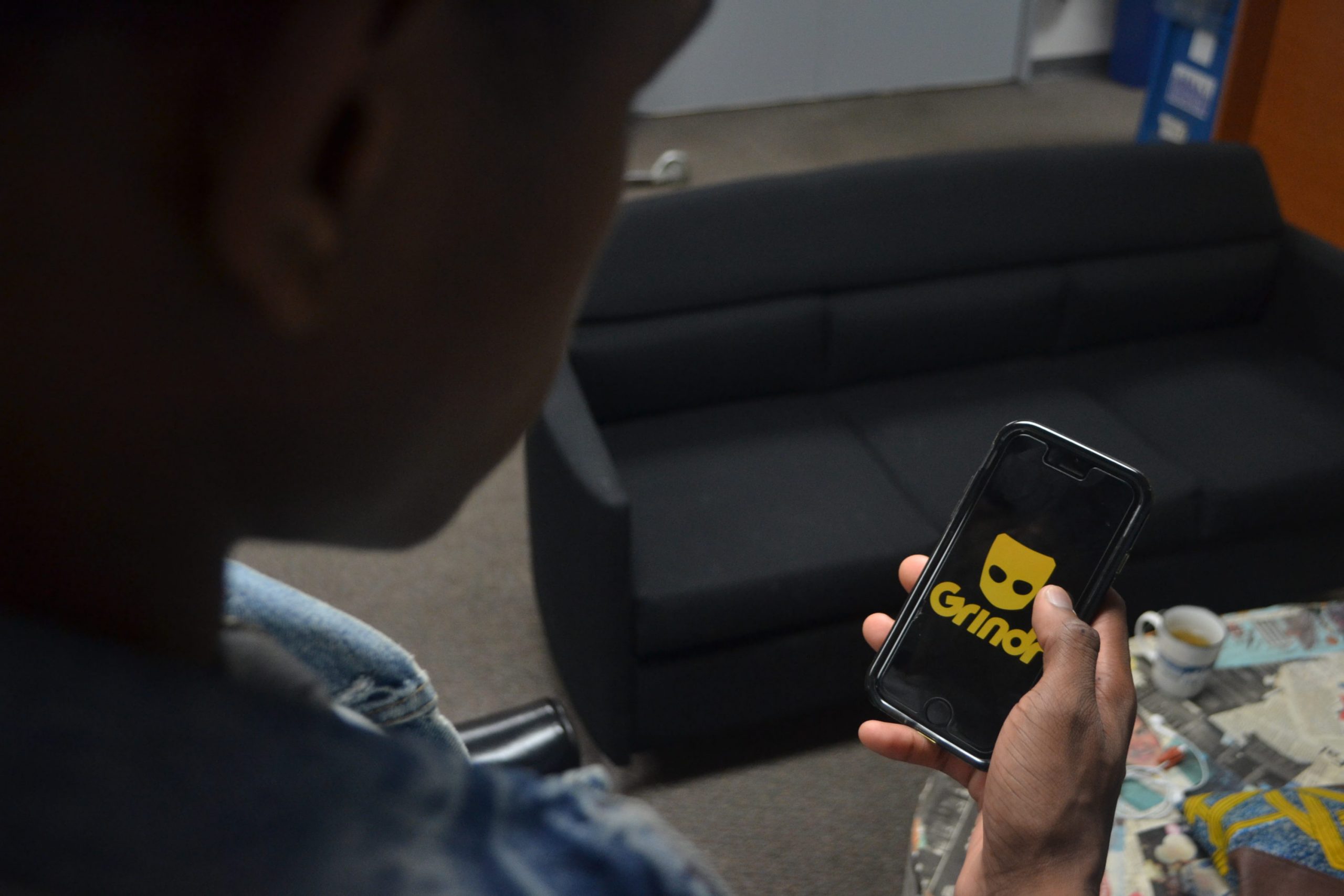
“Go back to Mexico,”
“You look like you’re on drugs,”
“I have a preference for light skin guys,” and
“Whites only.”
These quotes feature in Grindr’s most recent attempt to curb racism and hate speech on its eponymous online dating platform. Earlier this year, Grindr launched its marketing campaign: Kindr.
Grindr, a queer dating app, has often been criticized for the amount of racism and hate speech that runs rampant on the app. For many people who have used the app, the discrimination is obvious.
“Its very prevalent in bios and messages- black/white only, no latinos,” student Will DeLuca said.
DeLuca thinks this discrimination is even encouraged through Grindr’s design and features.
“Grindr lets premium users sort explicitly by race. I think people are a little more willing to discriminare because it’s ‘allowed,’” he said.
The phrase, “It’s time to play nice,” appears on Grindr’s website against a pulsating board of translucent, rainbow colors—n ostensibly hopeful declaration. But is this perhaps a fitting illustration of Kindr’s impact: a visually appealing and optimistic expression that is ultimately devoid of any meaningful substance?
With this campaign, Grindr is trying to address the long and complicated tradition of discrimination based on skin color.
While there is no disagreement that discrimination based on skin color is racist, many people today feel it’s normal when it comes to attraction.
A 2015 Australian study surveyed 2,177 gay and bisexual men to assess how they viewed sexual racism in relation to broader forms of racism. The men were assessed on their attitudes towards sexual preferences being displayed on dating apps, as well as their attitudes toward more general ideas of race and diversity.
These data sets were then cross-analyzed to determine if there was any correlation between the acceptance of sexual preferences and more abstract forms of racism.
The study found that these two were indeed linked.
“Almost every identified factor associated with men’s racist attitudes was also related to their attitudes toward sexual racism,” the study stated.
This study suggested that sexual “preference” is actually just racism hidden behind racially sanitized language. The study concluded that “sexual racism, therefore, is closely associated with generic racist attitudes, which challenges the idea of racial attraction as solely a matter of personal preference.”
The appropriately titled Kindr, Grindr’s recent initiative to discourage discrimination, features short-form documentaries, Instagram campaigns and written profiles of diverse, queer people.
All of this comes wrapped in glossy, pink-hued visuals that closely resemble a Petra Collins photo shoot.
In a video, Grindr assembled queer people of color and provided them a platform to share their experiences with sexual racism.
“You just start to wake up in the morning and look in the mirror and count all the reasons that nobody is going to love you,” a recent Rupaul’s Drag Race contestant, The Vixen, said in one video.
The mini documentary opens with extreme close-ups of its subjects. As they share their social interactions on Grindr, the camera cuts to close-up shots of their hands, their hair and their smiles, creating an intimacy between the viewer and interviewee that at first seems touching and poignant, like their problems are our problems.
As the video progresses, the camera backs up a bit, giving the speakers space to tell their stories and share their experiences with sexual racism. In doing so, Grindr’s camera gives them what they may often be denied on Grindr’s app: an identity.
But this video is just the beginning of Grindr’s attempt to address racism and hate speech on the app.
Grindr’s Instagram page has also been taken over by its Kindr initiative. What once was a mosaic of queer historical figures, celebrities and half-naked men, has now been transformed into cascading tiles of diverse queer people. Each Instagram photo is accompanied by a brief biography or personal quote about their experiences.
Grindr’s Twitter account has undergone a similar transformation, displaying much of the same content. And it doesn’t just stop on social media; these PSA-style mixed media campaigns also feature within the app itself. But one must wonder if the campaign will have lasting effects and if people on Grindr have noticed any difference.
“I’m actually unaware of the Kindr Campaign you are referring to,” DeLuca said.
The company’s head of communications, Landen Zumawalt, believes the problems of discrimination and racism in the gay community are so deeply seated, that even Kindr can’t fix everything.
“These issues have been present in our community long before Grindr, but we hope to increase conversations around it and have a dialogue about what constitutes sexual racism,” Zumwalt said.
Kindr may not be a complete solution, but if it can at least inspire the right conversations and begin to uplift the most vulnerable members of the queer community, then it’s a step in the right direction.
